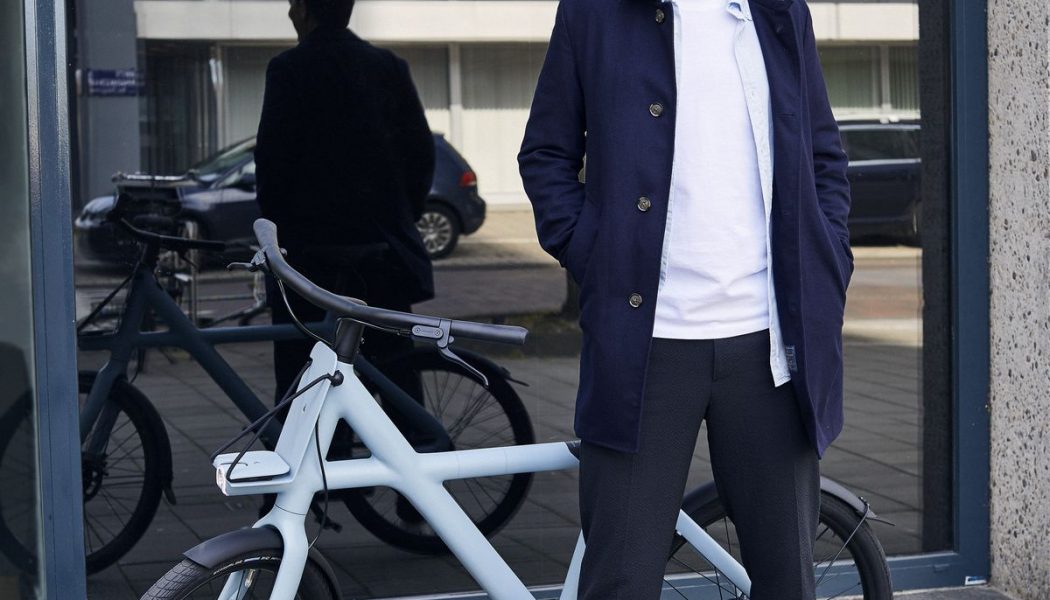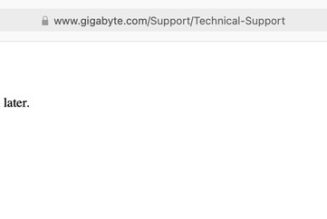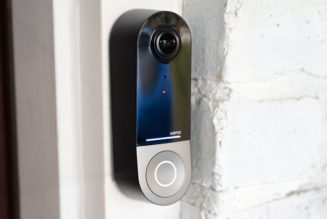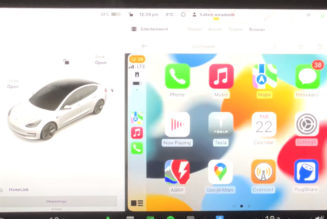VanMoof just announced $40 million in new outside investment to capitalize on the surging global demand for electric bikes. Importantly, VanMoof’s co-founders, Ties and Taco Carlier, tell The Verge that about a third of that new money will be directed at solving VanMoof customer support issues that have intensified with the launch of the company’s new S3 and X3 e-bikes in the middle of a global pandemic.
“Over the next six to twelve months, we’ll have upgraded every step of the customer journey, from production to scheduling check-ups. Getting a VanMoof e-bike serviced will be as easy as ordering a meal online,” promises Taco in a prepared statement announcing the new investment round.
VanMoof calls the new app-based service the Bike Doctor Network, and it’ll begin sending support technicians directly to customer locations when it launches in beta later this year.
:no_upscale()/cdn.vox-cdn.com/uploads/chorus_asset/file/21882101/352623_Taco_Carlier_5_98e9d0_original_1587388626.jpg)
I caught up with the Dutch brothers over Zoom on Monday to better understand two things: what’s being done to address the quality and delivery issues that have sullied the S3 / X3 launch, and how this new cash infusion will improve things in the future. Ties, the car mechanic-turned-engineer, was in Taipei where he oversees VanMoof’s supply chain and a new dedicated assembly plant operated by SINBON Electronics. Taco, the engineer-turned-business executive, was in Amsterdam where VanMoof is headquartered.
Sales of VanMoof bikes have been booming. The company says that it sold more bikes in the first four months of 2020 than it did in the previous two years combined. Sales of its new S3 and X3 e-bikes, launched in April, have also been selling at twice the rate of any previous launch from the company due to the lower starting price of $1,998, which set a new industry baseline for premium electrics.
Amplified sales have been mirrored by amplified complaints, however. Support forums like VanMoof-ing (which the company and founders monitor closely) are rife with unhappy customers. The most vocal are those still waiting for their bikes to arrive, suffering missed deadlines by several weeks at a time, yet receiving little to no communication from the company. This is despite assurances that the delivery issues that plagued VanMoof’s previous generation of bikes wouldn’t be repeated this time around, thanks to the company’s new “hyper efficient manufacturing and distribution system” touted at the S3/X3 launch event.
To make matters worse, some VanMoof owners who have received their new e-bikes complain about scuffs and damage that occurred during shipping. Others complain about wobbly wheels, hydraulic brakes that make noise or don’t work, or a wide range of cryptic error codes that flash on their disabled bike’s display. It’s also not unusual to be on hold for 20 minutes, 40, or longer when trying to call VanMoof support.
“We want to build the best service experience ever. And we are going from about the worst to the best, I think,” admits Ties in a moment of full transparency. “There’s a lot of frustration, I know. Even if it’s only a few percent of buyers that’s still way too much.”
Something clearly hasn’t gone to plan.
SO WHAT WENT WRONG?
The first issues with the S3 / X3 shipments appeared almost immediately and in far greater volume than anticipated. “We thought this bike would be ten times better than the S2 because we fixed everything,” explains Ties, the engineer. But new issues presented themselves soon after the first few thousand S3 bikes shipped, creating 10 times as many customer support calls instead. “We calculated in about 1 percent — 1 out of 100 bikes within the first week or so would have something important enough for a customer to give us a call. But that turns out to be closer to 10 percent,” he says. The company’s support team was quickly overwhelmed, creating a backlog of help requests.
The company currently assembles and ships between 400 and 500 bikes each day, or about 12,000 bikes each month. “We can not stop even temporarily to catch up with customer service because a lot of people have paid and are waiting for their bikes,” Ties says.
VanMoof says that some issues have already been corrected at the point of assembly. But that won’t fix the bikes that have already left for the staging warehouses in the US, Europe, and Japan before delivery to buyers. So VanMoof had to very quickly mobilize quality control teams to check every bike at the warehouses and filter out the ones with known issues. That additional quality control step in the middle created a delay of up to three weeks for some customers.
:no_upscale()/cdn.vox-cdn.com/uploads/chorus_asset/file/21882110/Artboard_3_copy_200623_131120.jpg)
VanMoof’s new eco-friendly boxes also created issues. The smaller, less wasteful boxes were cheaper to ship, helping to bring down the cost of the bike, but they didn’t offer enough protection during rough handling.
Ties suggests that he might activate the sensors on VanMoof bikes during shipment to measure the G-force they’re subjected to during delivery. “We didn’t do it yet, but we should. Sometimes you see the damage and it’s insane. We cannot even replicate it here, even if we throw it off a 10-meter wall,” he says.
:no_upscale()/cdn.vox-cdn.com/uploads/chorus_asset/file/21882662/VanMoof_Bike_Box_Header.jpg)
VanMoof once famously packed its bikes in boxes that implied they contained fragile big-screen TVs. It helped at first, but then the word got out. “It was such a well-known hack, and other companies started doing it,” says Ties. “I don’t think it really works anymore.” His brother Taco, however, is less convinced: “It could be a cool idea to try to do some A/B testing and put the television back on the box to see if it works.”
For the time being, VanMoof started reinforcing the smaller boxes to make them stronger while adding foam back to the packaging to protect the bike tubes. So far, the change looks promising, resulting in less damage during delivery, says Ties.
The other complication, unsurprisingly, was trying to launch the new VanMoof electric bikes in the middle of a pandemic. VanMoof’s supply chain of custom components was fine, humming along while its competitors were forced to shut down due to a lack of parts. But suddenly, everyone who ever bought a VanMoof bike in the last 11 years began calling customer support as bike usage soared around the world. “In April, or the end March, when the crisis started, at first it was three weeks of complete silence, and then it went all crazy,” recalls Taco. “Thousands of people started emailing and calling and it overwhelmed customer support.” Preorders for the S3 and X3 started in early April before the bikes began shipping in May.
The company has been scaling customer support ever since, but it’s had to do so within the restrictions of a COVID lockdown, with people working from home and having to be hired and trained remotely.
It’s easy to say with the help of hindsight, but all of the signs were there that bicycles, electric bikes, and VanMoof e-bikes, in particular, were in unusually high demand even before the less expensive, but more feature-packed, S3 and X3 bikes went on sale. Even VanMoof was saying as much in a blog post from March 20th, talking about the sales jump the company had seen since February. “I either had no time or I didn’t think to make the customer support a lot bigger at that time,” admits Ties. “But we should have anticipated that part as well, for sure.”
VanMoof is now catching up to the backlog while improving the initial quality of its bikes, but the company’s not out of the woods yet. The Brothers Carlier now concede that they’ve outgrown their existing support model that often requires bikes to be reboxed and shipped back and forth for repair.
“We had some big issues in the past four months with our service platform,” says Taco. “And I think this is a big opportunity not only to fix those issues, but reinvent how a bike should be serviced in the future.”
:no_upscale()/cdn.vox-cdn.com/uploads/chorus_asset/file/21882116/Artboard_2_200623_125944.jpg)
A GLOBAL MOBILE SERVICE NETWORK
“Our next frontier is to transform our business by building a full support ecosystem around every rider,” said Ties in today’s funding announcement. The company is targeting a rollout in the next six to 12 months built around four main components:
- A global mobile service network, called the Bike Doctor Network
- More intuitive app support
- Smarter software with remote diagnostic solutions
- More proactive customer support
That first bullet is the most notable. Competitors like Cowboy in Europe, and Rad Power in the US, also offer mobile service networks, whereby parts are shipped to a customer’s home where a certified technician is dispatched to perform repairs beyond the purview of the customer or local bike shop. Rad Power notably partners with Velofix to broaden its support network to more cities.
The Carliers, in traditional VanMoof style, think the best approach is to build their own mobile service network, as it does nearly every component on the S3 and X3 bikes. The Bike Doctor Network will be staffed by both full-time VanMoof employees and freelancers, trained to only repair and maintain VanMoof bikes.
The service will be offered in a few cities at the start and then rolled out globally shortly thereafter. “80 to 90 percent of our bikes are shipped to 50 cities around the world,” says Ties. “So we can focus on those 50 cities, that’s very doable. The first 5 or 10 are the most work, that’s what we’re working on now.” From there, it should be easy to take the model and expand it to more cities as needed, or so the thinking goes.
More specifically, VanMoof will launch the Bike Doctor Network in beta later this year in Amsterdam, Rotterdam, and Berlin, before arriving in more than 40 global cities by the end of 2021.
When asked if VanMoof would ever partner with a third-party bike-service company to augment VanMoof’s own mobile service network, Taco, the ever-pragmatic business executive, responded as expected: “Never say never,” he said.
Ties says that building VanMoof’s mobile service network on a global scale only recently became possible. First, they needed to begin shipping in the type of volume seen with the S3 and X3, which is only expected to grow in the years ahead — in May, the company claimed to have “over 120,000 riders.” Second, VanMoof needed to take control of the supply chain to ensure it had ready access to the parts needed for repair, something they’ve slowly been doing since their first electric bike launched four years ago. Finally, VanMoof needed to achieve the type of modularity and OTA update capabilities found in the S3 and X3 bikes so that a trained technician — not an expensive bike mechanic — could be cost-effectively dispatched to a customer’s home or office for service.
The new VanMoof Bike Doctor Network is not the same as the $340 Peace of Mind: Maintenance subscriptions that VanMoof offers in 21 cities today. POM, as Ties calls it, sends VanMoof’s Bike Doctors to your home or office to replace worn tires, lubricate the drivetrain, and perform other routine maintenance tasks at defined intervals. The on-demand mobile service network kicks into action as issues arise and will be available to all VanMoof customers who need assistance in the cities supported. Pricing for the new mobile service network hasn’t been finalized.
:no_upscale()/cdn.vox-cdn.com/uploads/chorus_asset/file/21882115/Artboard_3_200623_125916.jpg)
WAIT, THERE’S MORE?
As to the other three components of the new support ecosystem — more intuitive app support, smarter software with remote diagnostic solutions, and more proactive customer support — the VanMoof founders explained their plans for those as well.
Ties says to expect the VanMoof app to offer better support, possibly offering a utility that can be run on the bike to diagnose an issue instead of requiring a call to customer support. It might even order the part automatically after confirmation from the owner.
VanMoof bikes currently receive software updates a few times each year, maybe once every three months by Ties’ estimate. This new round of funding will help accelerate that. “Tesla cars, for example, where you get a weekly software update that adds features but also fixes a lot of bugs — I think that’s where we really want to be.” Ties says it’s also important to continuously update older bikes to keep them on the road longer, noting that VanMoof still maintains a software team dedicated to the S1, VanMoof’s first electric bike launched in 2016.
VanMoof is working to make its bikes so smart, so full of sensors, that they’ll be able to detect an issue before the customer does and then proactively take steps to resolve it. “We are working on more sensors…” begins Ties before pausing. “I don’t know how much exactly I should tell about this, but there are more kinds of sensors that we can build into the bike.” Ties envisions a bike that can detect a worn brake pad, for example, before the owner even notices, causing VanMoof to send a replacement part directly to the person’s home. “You can just change it, or maybe in the near future the mobile service agent can do it.”
VanMoof wouldn’t be the first to implement remote diagnostics in the mobility space. Superpedestrian scooters have had this capability for a while. The company responsible for the Copenhagen Wheel equips its fleet scooters with the intelligence to detect about 100 different points of failure to trigger a service request when needed.
But only a third of that $40 million investment VanMoof announced today is earmarked for improving after-sales support. According to Taco, the other two-thirds will be equally allocated to R&D and to ramping up production capacity.
“We have chosen two investors, NVP and Felix Capital that know everything about scaling brands. We deliberately chose an investor in the American market because I still believe that’s our biggest potential,” says Taco, who describes the US as VanMoof’s third-fastest growth market. “We also chose an investor — Balderton — with a deep knowledge of tech and especially software that can bring our software platforms to the next level.”
VanMoof’s competitors are raising capital as well. For example, Rad Power raised $25 million in February while Cowboy raised $23 million in July. And with VanMoof raising $53.5 million in new investment since May, two things are now abundantly clear: VanMoof is no longer a startup, and investors are now betting on electric bikes as the next frontier in mobility.
It’s money that gives VanMoof a lot of runway to achieve its goal of getting the next billion on bikes, just as cities around the world are finally waking up to the idea.
Update September 16th, 6:40AM ET: Added specific mention of the Bike Doctor Network and dates.










